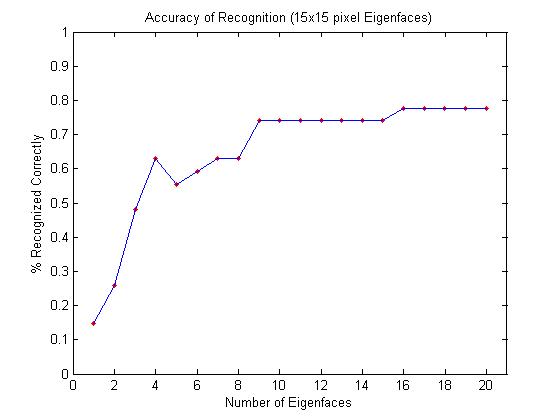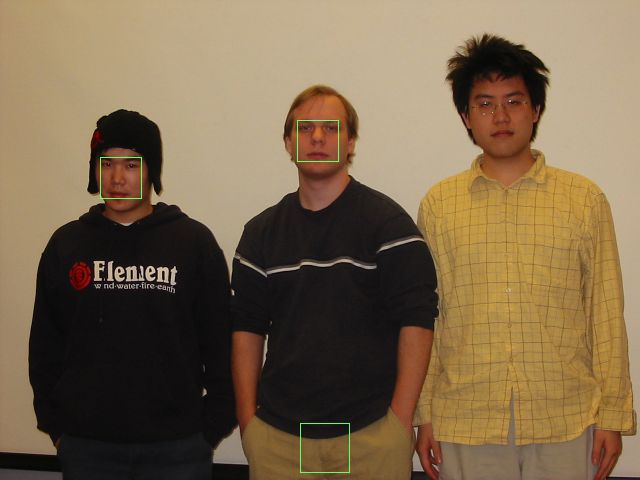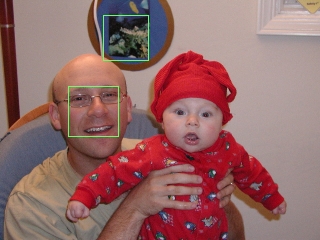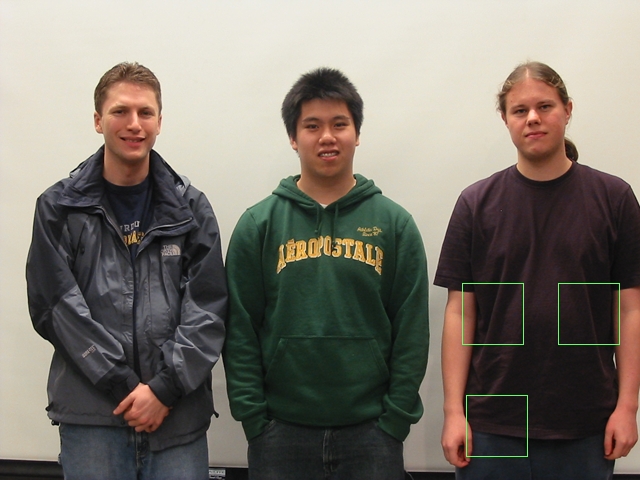Testing recognition with cropped class images
10 eigenfaces of 25x25 pixels
The Average Face:
The Eigenfaces:










Correct matches: 20/27 faces (74%)
| Smiling | Matching Non-Smiling |
|---|---|
01 |
22 |
02 |
02 |
03 |
03 |
04 |
04 |
05 |
05 |
06 |
06 |
07 |
07 |
08 |
08 |
09 |
20 |
10 |
10 |
11 |
06 |
12 |
12 |
13 |
04 |
14 |
14 |
15 |
03 |
16 |
16 |
17 |
17 |
18 |
18 |
19 |
19 |
20 |
14 |
21 |
08 |
22 |
22 |
23 |
23 |
24 |
24 |
25 |
25 |
26 |
26 |
27 |
27 |
I ran the recognizer over the range 1-20 eigenfaces of 15x15 pixels each. I have the plot of the results below,

QUESTIONS: Describe the trends you see in your plots. Discuss the tradeoffs; how many eigenfaces should one use? Is there a clear answer? You likely saw some recognition errors in step 3; show images of a couple. How reasonable were the mistakes? Did the correct answer at least appear highly in the sorted results?
ANSWERS: Obviously, the more eigenvectors we keep, the better the results. However, a key observation is the flat parts of the graph which mean that the additional eigenvectors we add in that range are not giving us much information (features), specifically, the features that would identify the faces we were making mistakes on. How many eigenvectors? From the plot, I would say 14 to 16 is a reasonable range but I used 20 for detection anyway. There is no correct answer to how many eigenvectors to use because as the rank of the eigenvector goes down, the lesser the variance it has which can be observed in the leveling of the plot in the 9-15 eigenvectors range. The mistakes were generally reasonable like 01 and 22 who kind of look the same and 11 and 06 who kind of have the same face shape. A weird one is 15 and 03 which have nothing in come, as far as I can see, whatsoever. But then again, I'm only human.





